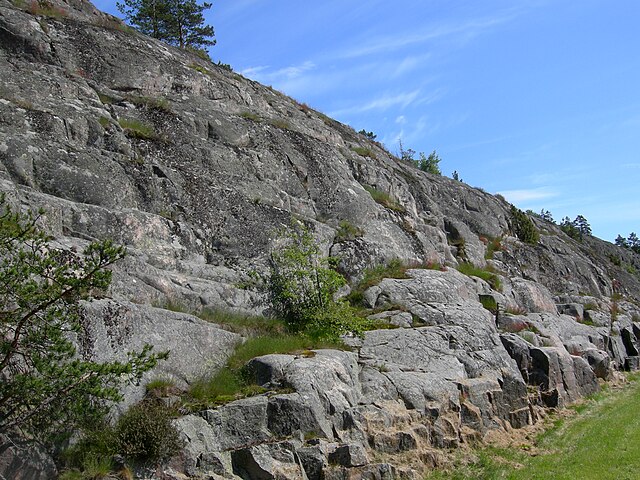A kame, or knob, is a glacial landform, an irregularly shaped hill or mound composed of sand, gravel and till that accumulates in a depression on a retreating glacier, and is then deposited on the land surface with further melting of the glacier. Kames are often associated with kettles, and this is referred to as kame and kettle or knob and kettle topography. The word kame is a variant of comb, which has the meaning "crest" among others. The geological term was introduced by Thomas Jamieson in 1874.
A kame near Kirriemuir, Scotland
A kame in Yellowstone National Park, Wyoming
A kame among the glacial drift on the terminal moraine of the Okanagan Lobe of the Cordilleran Ice Sheet on the Waterville Plateau of the Columbia Plateau in Washington
Kame internal structure as sketched by Newberry in 1874
Glacial landforms are landforms created by the action of glaciers. Most of today's glacial landforms were created by the movement of large ice sheets during the Quaternary glaciations. Some areas, like Fennoscandia and the southern Andes, have extensive occurrences of glacial landforms; other areas, such as the Sahara, display rare and very old fossil glacial landforms.
Antique postcard shows rocks scarred by glacial erosion
Yosemite Valley from an airplane, showing the "U" shape
Glacially plucked granitic bedrock near Mariehamn, Åland
Kamenitsa Peak erosion in Pirin mountain, Bulgaria








